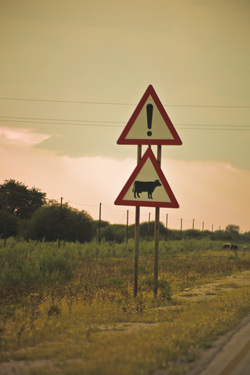 Transformations Spirituality Center
Transformations Spirituality Center


 Transformations Spirituality Center
Transformations Spirituality Center

4: Once upon a time there was ___. Every day, ___. One day ___. Because of that, ___. Because of that, ___. Until finally ___.
5: Simplify. Focus. Combine characters. Hop over detours. You’ll feel like you’re losing valuable stuff but it sets you free.
6: What is your character good at, comfortable with? Throw the polar opposite at them. Challenge them. How do they deal?
7: Come up with your ending before you figure out your middle. Seriously. Endings are hard, get yours working up front.
8: Finish your story, let go even if it’s not perfect. In an ideal world you have both, but move on. Do better next time.
9: When you’re stuck, make a list of what WOULDN’T happen next. Lots of times the material to get you unstuck will show up.
10: Pull apart the stories you like. What you like in them is a part of you; you’ve got to recognize it before you can use it.
11: Putting it on paper lets you start fixing it. If it stays in your head, a perfect idea, you’ll never share it with anyone.
12: Discount the 1st thing that comes to mind. And the 2nd, 3rd, 4th, 5th – get the obvious out of the way. Surprise yourself.
13: Give your characters opinions. Passive/malleable might seem likable to you as you write, but it’s poison to the audience.
14: Why must you tell THIS story? What’s the belief burning within you that your story feeds off of? That’s the heart of it.
15: If you were your character, in this situation, how would you feel? Honesty lends credibility to unbelievable situations.
16: What are the stakes? Give us reason to root for the character. What happens if they don’t succeed? Stack the odds against.
17: No work is ever wasted. If it’s not working, let go and move on – it’ll come back around to be useful later.
18: You have to know yourself: the difference between doing your best & fussing. Story is testing, not refining.
19: Coincidences to get characters into trouble are great; coincidences to get them out of it are cheating.
20: Exercise: take the building blocks of a movie you dislike. How would you rearrange them into what you DO like?
21: You gotta identify with your situation/characters, can’t just write ‘cool’. What would make YOU act that way?
22: What’s the essence of your story? Most economical telling of it? If you know that, you can build out from there.
Emma Coats is a freelance director of films, boarder of story, and sometime public speaker. http://storyshots.tumblr.com/

SCBWI-MI proudly announces the 2014 Mentorship Program for Fiction Picture Books. This is a competition and the Grand Prize is a 12 month mentorship with acclaimed Michigan writer, Boni Ashburn, author of six fiction picture
books including, Hush, Little Dragon, Over at the Castle, I Had a Favorite Dress, Builder Goose: It’s Construction Rhyme Time, and forthcoming The Fort That Jack Built. The competition is open to a pre-published Michigan resident who is a current member of SCBWI. For more details about the mentorship program and the application form, click here. Please note: the submission deadline is August 5, 2013.
Disclosure: Boni is a friend of mine and I’m already jealous of the winner. 😉



 Watch out for exclamatory cows!
Watch out for exclamatory cows!
Show don’t tell involves more than images…it is about immediacy. Whenever you’re revealing action right in the moment, you are showing and that’s definitely a big part of picture books. The IMAGES are the gift of the illustrator but there is far more to a picture book and far more to showing than visuals.
Picture books and beginning readers are a mix of
showing and telling just like all the other forms of writing…they just leave out the visuals because someone else carries that burden.
Any time you are portraying a specific moment of story time, you are showing. When you talk in generalizations, you are most often telling.
Insert comment from Carrie: “Oh! It is really that simple?”
Fast forward to May 27, 2020 and I’m updating this timeless post with a new short video by picture book author and creator of the 12 x 12 Program, Julie Hedlund. The video is about how to tell the difference between showing and telling, and the role of telling in picture books. Julie has a way of cutting to the important stuff and this video will help solidify Show and Tell concepts. Go ahead and check it out. I’ll wait…
Hi! Are you back? Here’s one more example of showing and telling:
As with ANY story, picture books are a mix…For instance (from WHERE THE WILD THINGS ARE), “The night Max wore his wolf suit [showing, specific story moment, it wasn’t just any night…it was the specific night when he wore his wolf suit…] and made mischief of one kind and another [telling, we back away and generalize the badness by compressing time with a generalization], his mother called him “Wild Thing!” [showing, specific moment where his mother spoke] and Max said “I’ll eat you up!” [showing, specific moment when Max spoke] so he was sent to bed without eating anything [telling as it compresses time by not giving us the quote where the mom actually spoke and sent him to bed without supper]
Hope this helps you think about showing and telling and how each are needed in picture books.

Life Shrinks or Expands in Proportion to One’s Courage
– anonymous


